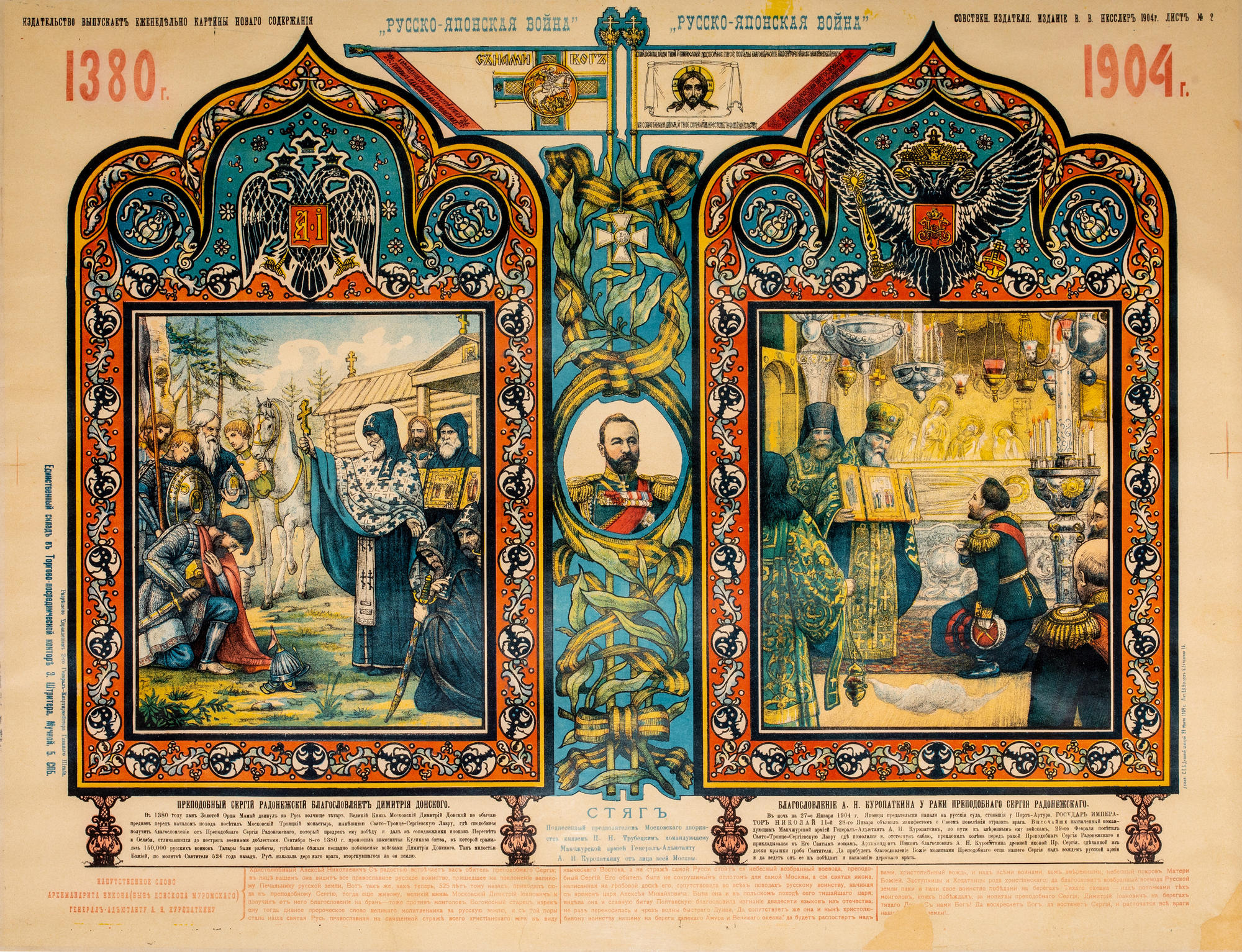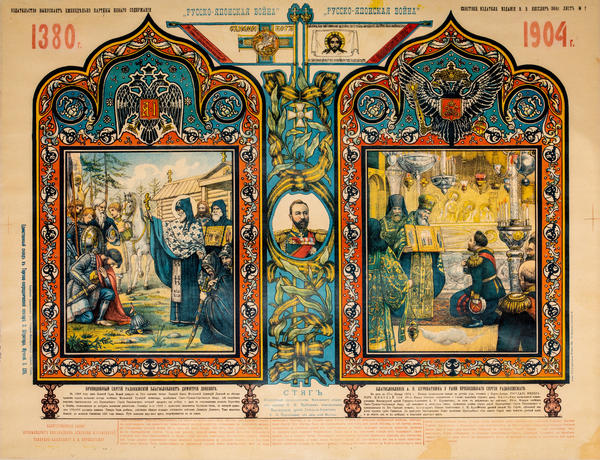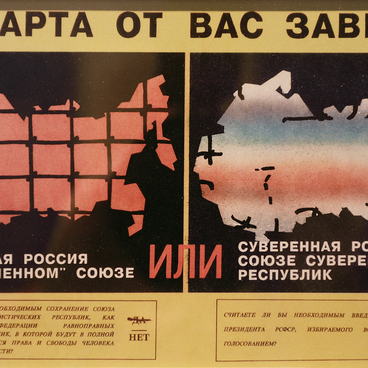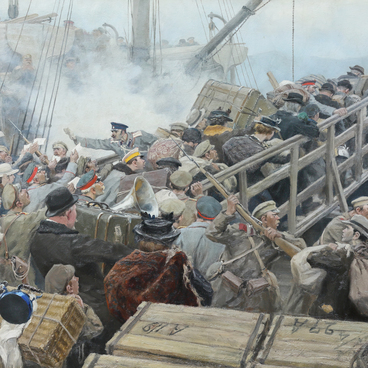The exhibited poster was printed in 1904 to inspire the Russian troops to fight against Japan.
On the left-hand side of the poster, one can see Dmitry Donskoy, the Prince of Moscow, who is asking for a blessing from Sergius, the Hegumen of the Monastery of the Most Holy Trinity, to the feat of arms before the Battle of Kulikovo in 1380. There is a descriptive text below the colourful image. It says that the decisive victory of the Russian troops in the Battle of Kulikovo was a major step in restoring unity of Rus and towards the future overthrow of the Mongol Yoke.
The right-hand side of the poster mirrors the left-hand scene: Aleksey Kuropatkin, who commanded the Russian forces in Manchuria, is praying for the defeat of the enemy before the reliquary of St. Sergius of Radonezh.
When he gained a high position at the start of the Russo-Japanese War, Kuropatkin did visit the Trinity Lavra of St. Sergius, where he received as a blessing an ancient icon called St. Sergius’ Vision of the Virgin Mary painted by Eustathius Golovkin on a board from the lid of St. Sergius’ casket.
In the late 19th century, Japan was the main obstacle to the extension of Russia’s influence in the Far East. By the mid-1890s, Japan had embarked on an expansionist policy and won the Sino-Japanese War. Under the Treaty of Shimonoseki, China ceded to Japan some territories, including the Liaodong Peninsula and Manchuria.
Japan’s growing influence triggered the Triple Intervention by Russia, France and Germany, through which Russia took control of the Liaodong Peninsula. On 27 January 1904, in the wake of those events, the Japanese fleet launched a surprise attack against the Russian squadron in the outer roads of Port Arthur; after that the Japanese troops landed in Korea.
In August 1904, the Japanese troops laid siege to Port Arthur, and after long battles, the Russian garrison surrendered. After several more victories, the Japanese Army destroyed the Russian squadron, redeployed from the Baltic Sea, in the Battle of Tsushima. On 23 August 1905, the Treaty of Portsmouth was signed; under the Treaty, Russia ceded to Japan the southern half of Sakhalin Island, the South Manchuria Railway and the leasehold rights to the Liaodong Peninsula.
On the left-hand side of the poster, one can see Dmitry Donskoy, the Prince of Moscow, who is asking for a blessing from Sergius, the Hegumen of the Monastery of the Most Holy Trinity, to the feat of arms before the Battle of Kulikovo in 1380. There is a descriptive text below the colourful image. It says that the decisive victory of the Russian troops in the Battle of Kulikovo was a major step in restoring unity of Rus and towards the future overthrow of the Mongol Yoke.
The right-hand side of the poster mirrors the left-hand scene: Aleksey Kuropatkin, who commanded the Russian forces in Manchuria, is praying for the defeat of the enemy before the reliquary of St. Sergius of Radonezh.
When he gained a high position at the start of the Russo-Japanese War, Kuropatkin did visit the Trinity Lavra of St. Sergius, where he received as a blessing an ancient icon called St. Sergius’ Vision of the Virgin Mary painted by Eustathius Golovkin on a board from the lid of St. Sergius’ casket.
In the late 19th century, Japan was the main obstacle to the extension of Russia’s influence in the Far East. By the mid-1890s, Japan had embarked on an expansionist policy and won the Sino-Japanese War. Under the Treaty of Shimonoseki, China ceded to Japan some territories, including the Liaodong Peninsula and Manchuria.
Japan’s growing influence triggered the Triple Intervention by Russia, France and Germany, through which Russia took control of the Liaodong Peninsula. On 27 January 1904, in the wake of those events, the Japanese fleet launched a surprise attack against the Russian squadron in the outer roads of Port Arthur; after that the Japanese troops landed in Korea.
In August 1904, the Japanese troops laid siege to Port Arthur, and after long battles, the Russian garrison surrendered. After several more victories, the Japanese Army destroyed the Russian squadron, redeployed from the Baltic Sea, in the Battle of Tsushima. On 23 August 1905, the Treaty of Portsmouth was signed; under the Treaty, Russia ceded to Japan the southern half of Sakhalin Island, the South Manchuria Railway and the leasehold rights to the Liaodong Peninsula.



